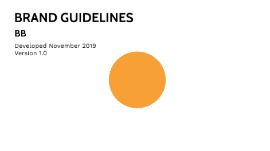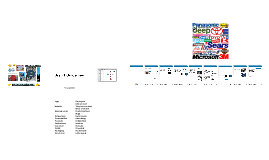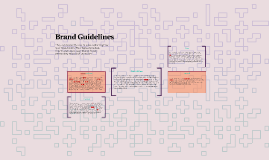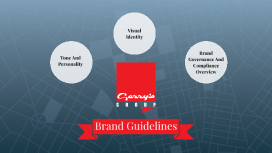Creating a PowerPoint Template Based on Brand Guidelines
Transcript: Primary Font: Arial The primary font for all brand communications is Arial. This sans-serif font is chosen for its modern look and readability, making it suitable for both digital and print media. Secondary Font: Times New Roman Typography Standards Times New Roman serves as the secondary font, ideal for formal documents and print materials. It balances the modernity of Arial with a traditional touch, ensuring versatility in brand representation. Logo Usage Guidelines Font Sizes: Hierarchical Structure Utilize specific font sizes for different text types: headings should be clear and larger for visibility, body text should be readable at a standard size, and captions should be smaller yet legible, maintaining a consistent hierarchy. Incorrect Logo Usage Correct Logo Usage Incorrect logo usage undermines the brand's visual identity. Common mistakes include using altered colors that deviate from the brand palette and distorting the logo's proportions, which can lead to a loss of recognition and professionalism. Proper logo usage is crucial for maintaining brand integrity. This includes ensuring that there is adequate clear space around the logo to avoid clutter, and adhering to minimum size specifications to guarantee visibility. Logo: Core brand identifier Overview of Brand Elements Color Palette Selection Color Palette: Sets visual tone Introduction to Brand Guidelines Typography: Defines brand voice Imagery: Enhances brand message Colors are chosen to support brand messaging and emotional impact. #FF5733 #900C3F #C70039 Enhances Brand Recognition Builds Trust with Customers Creates a Cohesive Brand Experience Brand guidelines are a comprehensive set of rules that define how a brand presents itself to the world. They serve as a framework for maintaining consistency in visual identity, tone, and messaging, which is crucial for building brand recognition and trust. Consistent branding establishes trust by providing a reliable experience for customers, leading them to feel confident in choosing your brand repeatedly. Recognizable branding helps customers identify your products or services quickly, making it easier for them to choose your brand over competitors. A cohesive brand experience across all touchpoints ensures that customers receive a unified message, which reinforces brand values and identity. Importance of Consistency in Branding Primary Color: Represents energy and passion. Secondary Color: Symbolizes strength and determination. Accent Color: Conveys sophistication and depth. Imagery and Graphics Guidelines Selecting the right images and graphics is crucial for reinforcing brand identity. Consistency in imagery helps convey the brand's message and values effectively while ensuring alignment with the overall branding aesthetic. Creating a PowerPoint Template Based on Brand Guidelines Creating the PowerPoint Template A structured approach to developing a cohesive and brand-aligned presentation template. Master Slide Setup Font Selection Color Scheme Definition Establish a consistent layout for all slides to maintain uniformity. Choose appropriate fonts for headings, body text, and captions to reflect brand identity. Select primary, secondary, and accent colors from the brand palette to enhance visual appeal. Designing a customizable PowerPoint template that aligns with established brand standards. Applying Brand Elements in Slides Understanding how to effectively integrate brand elements into presentations enhances brand recognition and coherence. Incorporate Logo Ensure the logo is placed prominently and follows correct usage guidelines. Use Brand Colors Apply the designated color palette consistently across all slides for visual harmony. Apply Typography Standards Utilize the specified fonts and sizes for headings and body text to maintain brand identity. Ensure all brand elements are consistently applied across all slides, review for adherence to guidelines, and make necessary adjustments to maintain a cohesive brand image. Final Review and Adjustments

















